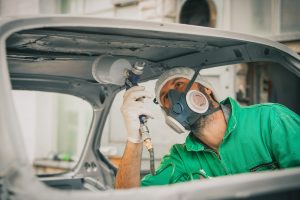Although abrasive blasting goes by other names—such as sandblasting, media blasting, and grit blasting—all of them refer to the process that involves forcibly propelling a stream of abrasive material against a surface to clean or modify its properties. This method has been used for many years and works with a variety of applications including surface preparation and finishing, contaminant and coating removal, and smoothing, roughening, or altering a part’s surface.
WHY USE ABRASIVE BLASTING?
Abrasive blasting methods are commonplace in ship and rail yards as well as in a range of industrial applications, especially those in the automotive and construction industries. The type of blast media can be tailored to the specific application with common types including: glass bead, corn cob, sand, dry-ice, aluminum oxide, walnut shells, stone grit, chilled iron, steel shot, coal slag, ceramic and plastic grit.
COMMON APPLICATIONS INCLUDE:
- cleaning, deburring, or peening metal surfaces
- Removal of paint, rust, sand or scale from surfaces
- Removing mold flash from plastic components
- Creating surface texturing to alter the appearance of stamped or molded products
What makes abrasive blasting so popular? The appeal revolves around the method’s efficient use of energy and the ability to recycle the abrasive materials for multiple uses. Blasting media is also fairly easy to obtain and comes in many different forms, giving you the ability to tailor it to the application. Despite its long history, the issues with abrasive blasting have continued to grow over the years, especially with operator safety concerns.
ISSUES WITH ABRASIVE BLASTING
COST
- PPE for workers, sometimes including full hazmat suits
- Preparation time for cleaning takes longer as more equipment is needed, decreasing the amount of materials that can be cleaned
- The location where you blast is important to whether or not the blasting material can be recycled—in a blast cabinet, shot blaster, or blast room, the media may be reclaimed and recycled. With outdoor blasting you stand the chance of having to completely dispose of your media after each use, making time and cost efficiencies decrease.
OPERATOR SAFETY CONCERNS
- Hearing issues due to excessive noise from the blasting systems
- Repetitive motions on operators, especially when performing overhead work
- Problems with inhalation of the media (similar to how sandblasting was leading to increases in silicosis cases)
DAMAGE TO SUBSTRATE
- Media blasting can be too effective sometimes—causing damage to the substrate. This was what we helped artisans and engineers with at FRCE in North Carolina last year.
HOW CAN LASER ABLATION HELP?
In recent years we’ve seen an increase in customers coming to us looking for an alternative cleaning method to their current abrasive blasting technique. Whether it’s due to operator concerns, cost, speed, or cleaning quality, most issues can be solved using laser ablation. Other benefits of incorporating laser ablation into your process include:
NON-DESTRUCTIVE CLEANING
- Cleaning using laser ablation is a safe and effective way to remove contaminants and other coatings from your part without damaging the underlying substrate
COST SAVINGS
- Running costs are lower than that of PC desktop
- Our systems are low-maintenance and require little additional cleanup
 Costs are lowered by not requiring a full ensemble of protective gear—all our laser systems require are laser safety glasses
Costs are lowered by not requiring a full ensemble of protective gear—all our laser systems require are laser safety glasses- We provide on-site operations and safety training upon delivery, ensuring your operators are fully knowledgeable on how to run the system
ENVIRONMENTAL ADVANTAGES
- Energy savings (up to eight times lower than with conventional processes)
- Laser cleaning systems require no chemicals and no abrasive components
HOW CAN ADAPT LASER HELP?
We offer state-of-the art laser cleaning systems that come in a variety of power options and can be used for handheld or automated applications. Working with our partner in Germany, cleanLASER, these systems can be tailored to your specific application, making it as efficient as possible.
All you need to do is contact our sales team to get the conversation started. Our applications lab in Kansas City, Missouri has a dedicated applications engineer whose job it is to determine if laser cleaning system is right for your process, and what that system may be.
Can’t make it to our Kansas City office in person? Contact us for a virtual lab demonstration led by one of our applications engineers and accompanied by our sales staff. We also have the means to send one of our laser cleaning systems and a sales team member to your on-site location for a safety demonstration and testing on your facility’s specific materials.


